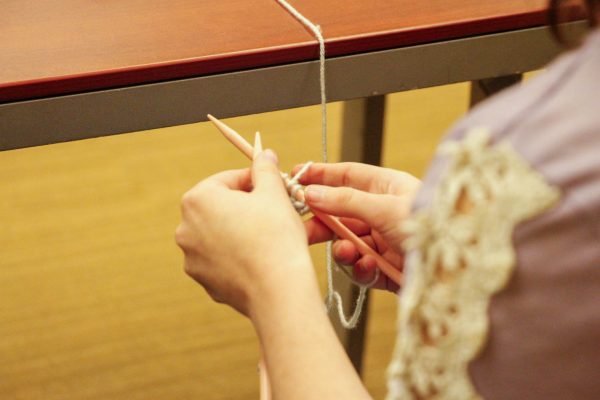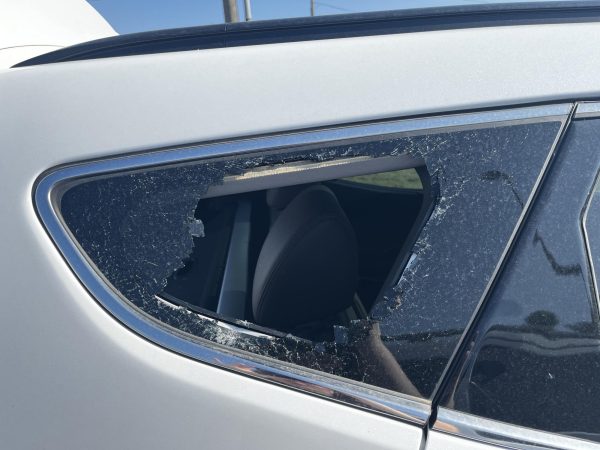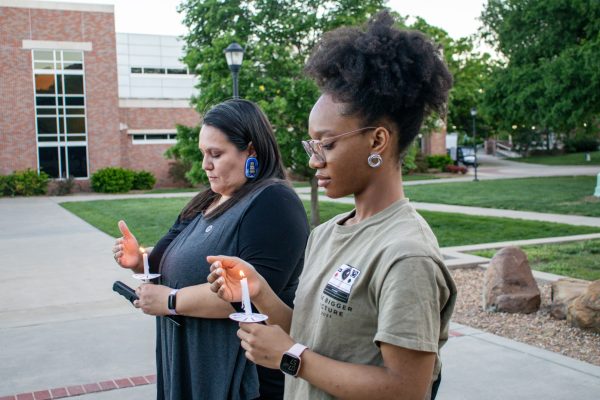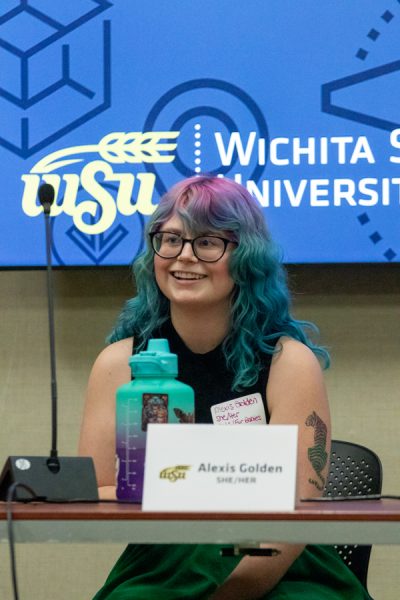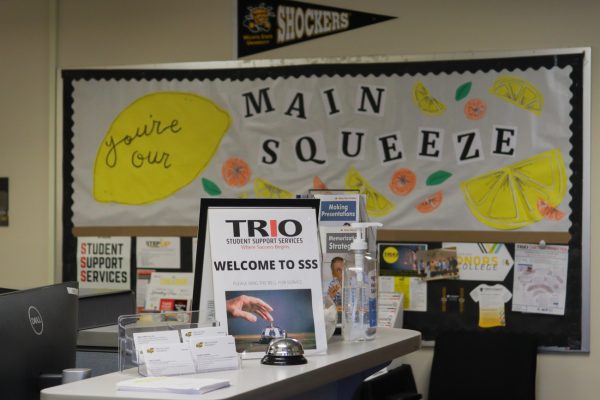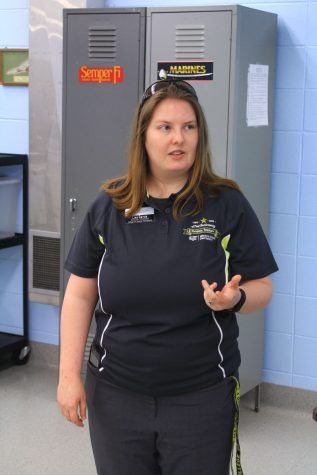Gender-neutral restrooms open in Heskett
Prior to this semester, transgender students at Wichita State were stuck in a dilemma at the Heskett Center: to shower in the male or female locker rooms?
This disconcerting position that wasn’t addressed until December when a collaborative deal between WSU administration and the university’s Physical Plant opened a new gender-neutral restroom in the Heskett Center.
Near the weight room and swimming area are two restrooms. The one on the left is old and mundane — everything a person, male or female, needs to get in and out. On the right is the new gender-neutral restroom, which features a full showering area on the right, a remodeled interior and a restroom area on the left.
With a growing diverse community, the university was faced with a problem it quickly addressed, said Eric Maki, director of Campus Recreation.
“Essentially,” he said, “some people identified, ‘Look I’m transgendered. I’m mentally a female. I dress as a female. But I happen to have some male parts to me. What locker room [do] you want me to go in?’ We can’t tell transgender students to go into one locker room and not the other.
“Which forced the question of ‘how are transgender students supposed to get showered and cleaned up?”
After several transgender students reached out to officials in the Heskett Center, Maki spoke with other campus officials to find a remedy.
Maki — along with Equal Employment officer Francisco Gonzalez, retiring university vice president and general counsel, Ted Ayres, vice president of student affairs, Wade Robinson, Physical Plant and the Office of Diversity and Inclusion — said all agreed that it would be beneficial to the university and, primarily, the students, to get this done.
Once the location was solidified, the group began working on blueprints. Physical Plant funded the project, which cost an estimated $35,000, something Maki said was “a huge thing.”
Building and remodeling the restroom was a three-month process that started in September. Before the start of winter break, the new gender-neutral restroom was open for use.
“We all knew we had a problem,” Maki said. “Previously, there wasn’t any outcry, but once it was identified that there was a need, we got on it.”
Although transgender students inspired the restroom, Maki said the restroom is available to anyone. Also, due to a lack of a locker room, the Heskett Center provided two 36-by-48 inch black lockers outside of the restroom.
Since the opening in December, Maki said he or anyone else working in the Heskett Center hasn’t received direct feedback yet. However, he said through the Office of Diversity and Inclusion, a transgender student expressed gratitude to one of the office officials. Maki said the student saw the restroom and was pleased enough that she posted pictures on her Facebook and Twitter accounts.
Elle Boatman, a transgender student on campus, took notice.
“I think the implementation of the gender-neutral space at the Heskett Center is a great example of the university’s dedication to becoming a more welcoming and inclusive environment for all minorities,” Boatman said. “Having that space makes me, a trans woman, feel more comfortable and thus more willingly and likely to visit the Heskett and utilize its facilities.”
Boatman said other transgender students she has talked to have been excited about the new space and what it symbolizes for the university.
Boatman said she shared the news on her Facebook page as well, which was also shared by about 50 others after being viewed on her page. Some of the individuals that shared were alumni, she said.
Though Maki hasn’t received a formal “thank you,” he said he understands the magnitude of impact the implementation of the new restroom will have on the campus. It’s been more of a silent thank you, Maki said.
“It’s not a thing where you purchase a new piece of weight room equipment and people come up and thank-you,” he said. “It’s been more of a quiet appreciation.
“We felt like transgendered students needed a spot. This isn’t a luxury — this is a need. We’re bringing in a more diverse population of students, and we want to provide as welcoming of an environment for everyone as best we can.”




